- Home
- Antonia Fraser
Perilous Question Page 33
Perilous Question Read online
Page 33
Subsequently a statue of Grey was erected in Newcastle upon Tyne at the top of Grey Street; the dedication referred to ‘an arduous and protracted struggle safely and triumphantly achieved in the year 1832’.* A hundred years after the Bill, a further plaque was added with the words: ‘After a century of civil peace, the people renew their gratitude to the author of the Great Reform Bill. 1932.’ In principle, however, Lord Grey had the retirement of his dreams – remembering those yearnings often expressed during the difficulties of the Bill – that is to say, with his wife, surrounded by children and grandchildren. Creevey, who visited him, commented on his ‘tranquillity and cheerfulness’; he said that Grey derived the same pleasure from winning half a crown at cribbage as he had from the Reform Bill.29
Lord Althorp, although younger, enjoyed a similar retirement following the death of his father Earl Spencer in 1834, when he inherited the superior title and had to leave the Commons for the Lords. In his case prize bulls and other agricultural pursuits stood in place of the children he had forsworn after the early death of his beloved wife (whose portrait he asked to be hung round his neck when he was dying in 1845). Macaulay’s commentary on his political career, although apparently condescending, at the same time contained a great deal of the truth: he doubted whether anyone who had ever lived in England ‘with no eloquence, no brilliant talents . . . with nothing in short but plain commonsense and an excellent heart had ever possessed such influence’.30
A very different fate awaited a large number of the prominent who had been involved in the two-year maelstrom of the Bill. No less than six of them would become Prime Minister: Wellington (again), Sir Robert Peel, Lord Melbourne, Lord Palmerston, Lord John Russell and the former Edward Stanley, now the Earl of Derby. The special circumstances of the maelstrom were demonstrated by the fact that Palmerston and Derby were both Tory Prime Ministers – leaders of a party becoming delineated as the Conservative Party, just as Whigs were transforming into Liberals.
There was one catastrophe – as it seemed at the time – which followed shortly after the passing of the Reform Bill which proved in the end to have a purgative effect, much like the Bill itself. This was the Great Fire which consumed the Houses of Parliament in October 1834. To the Tories and those of conservative inclinations, of course, it came as what has been described as ‘a proper punishment for a craven legislature’ which had surrendered to the double pressure of the mob and the middle classes in passing the Reform Bill. To the Whigs, and liberals generally, the fire came as a welcome cleansing element to sweep away the corrupt old order, symbolized by the ancient, stuffy, notoriously inadequate buildings. Some disaster in the antique structures, so ill-suited to their purpose (again there was a comparison to the electoral system of the country), had long been predicted. Sir John Soane observed the inherent dangers in such ‘an extensive assemblage of combustible materials’ and the want of security from fire, with so much timber covered in plaster.31
If Queen Adelaide, who had not forgiven the Whigs, believed with the Ultra Tories that the fire was divine retribution for the Reform Bill, King William, poking round the still smouldering ruins, appeared to be ‘gratified as if at a show’. From his attitude to the remains, he obviously thought that what had begun should be completed. Ever anxious to escape incarceration in Buckingham Palace, he suggested hopefully that Parliament itself might be transferred there and occupy the space in place of the Sovereign: the combined Parliament and palace would be ‘the finest thing in Europe’.32 Once again his hopes were to be disappointed.*
Outwardly in the Whig world, it seemed that nothing had changed. And yet in reality nothing remained the same. There had been two confrontations of enormous moment during the last two years: between Lords and Commons, and subsequently between Crown and Ministers. In both cases, the reformers secured victory without the final bloodthirsty encounter which both sides dreaded; on the surface politics, not physical force, secured the passage of the Reform Bill. Yet in the Europe of the 1830s, Crown, Lords and Commons were all grimly aware that riots which presaged revolution could not be so easily ignored. And there had been plenty of riots in Britain, from the early days of Captain Swing in the high summer of 1830 onwards. This was where economic distress played its part: as long ago as 1818, Thomas Attwood had declared that the Jacobins might as well clamour to the winds as to a well-fed and fully employed population, but the poor and unemployed were a different matter.33 In the end we might reverse Wellington’s famous dictum that the beginning of Reform was the beginning of Revolution: it was the apparent start of Revolution which led to the beginning of Reform.
The deft manipulation of popular outrage by unionists and Radicals, men like Attwood, Parkes and Francis Place – men who were in favour of Reform, even if for the time being it had to be limited – should never be underestimated in its contribution to the successful outcome of the Bill. Francis Place was certainly quite clear in his own mind about the part that popular fury – managed popular fury – had played. He gave his own verdict: ‘But for these demonstrations, a Revolution would have occurred . . . we were within a moment of general rebellion.’ This was the first time, he said, that the people ever combined of their own free will for a really national purpose. This was the fiercely held emotion of the time: a genuine dread of revolution which Sydney Smith recalled afterwards as a ‘hand-shaking, bowel-disturbing passion of fear’.34
With the benefit of hindsight it is possible to wonder, of course, what kind of revolution would actually have taken place. Menacing comparisons to the 1640s and 1688, to say nothing of the frequent invocations of the French Revolution of 1789 (and 1830) – how valid would they have turned out to be if Wellington had returned to government? But in 1832, it was the passionate perceptions of the time – the real fears, not the calmer, dispassionate views of the future – which were crucially important and swayed the behaviour of all those involved.
When Lord Grey thanked Attwood for his help on 19 May 1832, he may initially have seen himself as playing a diplomatic role; but he was also speaking the truth. ‘The People’ to whom Grey had referred so often in his own speeches, as did other Whigs, were beginning to emerge as a concept quite different from ‘The Mob’. Attwood’s own frequent emphasis on the need to avoid violence stood him in good stead since, like Grey, it made it impossible plausibly to denounce him as a revolutionary, one who yearned for those barricades. As it was, Macaulay was able to comment with truth that the changes produced by violence were often followed by reaction, whereas ‘the victories of reason, once gained, are gained for eternity’.35
At the time of the Royal Assent, on 7 June, Sir John Hobhouse summed it up: ‘Thus ends this great national exploit. The deed is done.’ He added, with a sense of incredulity which reflected the tension of the whole long-drawn-out drama: ‘It is difficult to believe that it is done.’36 It was indeed a great national exploit. If the deed was not done for ever, it was at the very least a great beginning.
* It remains at Howick to this day.
* It was no doubt to tease his friend the poet that Dr Thomas Arnold nicknamed three roads near Dove Cottage in the Lake District where Wordsworth had lived, ‘Old Corruption’, ‘Bit by Bit Reform’ and ‘Radical Reform’. ‘Old Corruption’ is now known locally to walkers as ‘the coffin path’.
* Site of the present National Gallery in what is now Trafalgar Square.
* Still to be seen, and acting as a convenient local trysting-place for various activities, as well as – suitably enough – a focus for placards and protests. Sadly, the modern Metro sign reads ‘MONUMENT’, not ‘GREY’S MONUMENT’.
* At the time of writing, the two fine things still remain separate.
REFERENCES
Prologue: A new King, a new people
1.Arbuthnot, II, pp. 385–6
2.Gore, Creevey, p. 301
3.Haydon, p. 626
4.Broughton, p. 207
5.Wellesley, p. 16
6.Fraser, Marie Antoinette, p. 1
33
7.Greville, II, p. 345
8.Haydon, p. 561
9.Fonblanque, II, p. 95
10.Arbuthnot, II, p. 352; Robinson, p. 220; Edgeworth, p. 463
11.Times History, p. 267
12.Arbuthnot, I, p. xv
13.Croker, II, p. 70
14.Somerset, William IV, p. 104
15.Wakefield, England, I, p. 123; Hopkirk, p. 830
16.Aspinall, Diaries, p. xvi
17.Arbuthnot, II, p. 354; Aspinall, Diaries, p. xvi; Grey Correspondence, II, p. 464
18.Ziegler, William IV, p. 144
19.Somerset, William IV, p. 120; Trevelyan, Grey, p. 73
20.Queen Adelaide’s Diary, p. 167, 16 December 1831; Hopkirk, p. 58
21.Edgeworth, p. 504; Greville, II, p. 333
22.Watkins, p. 486
23.Dino, I, p. 3
24.Greville, II, p. 3; Hopkirk, p. 103
25.cit. Armitage, ‘Patriot’, p. 415, note 78
26.Queen Adelaide’s Diary, p. 53, 16 July 1830
27.Kelly, Holland House, p. 158
28.Trevelyan, Macaulay, I, p. 159, note 1
29.Mitchell, Whig World, p. 130
30.H. of. C., VII, pp. 237–41; G.E.C., III, pp. 501–2
31.Innes, ‘“Reform”’, p. 71
32.Evans, p. 52; Robinson, p. 232
33.BL Add. MS 51751 fol. 32; Times History, p. 269
34.Wallas, p. 243
Chapter One: The clamour
1.Briggs, ‘Background’, p. 317
2.Rutland MSS; Hansard, House of Lords 27 February 1812
3.Greville, II, p. 370
4.Foot, pp. 60 et seq.; Hansard, House of Commons 15 March 1832
5.Stirling, p. 193
6.Hilton, pp. 416–17; Wakefield, Swing, p. 7; Hamburger, p. 71; Hobsbawm and Rudé, pp. 16 et seq.
7.Hilton, p. 424
8.Bagehot, ‘Althorp’; Cannon, pp. 29–30
9.Brock, p. 630
10.Pearson, p. 234
11.Hansard, House of Commons 4 March 1831
12.New, pp. 87–90
13.Clive, pp. 182–3; Torrington Diaries, p. 251; Hunt, p. 5
14.Hunt, p. 24; pp. 17–18; Dent, p. 430
15.Hansard, House of Lords 4 October 1831
16.Brock, p. 28; p. 22
17.Macintyre, p. 35; History of Parliament Online
18.Newbold, p. 47; Smith, Grey, p. 136
19.Creevey, II, p. 302
20.Foreman, p. 203
21.Holland Diaries, p. 121
22.Greville, I, p. 82; Briggs, ‘Background’, p. 299; Aspinall, Diaries, p. 48
23.Smith, Grey, p. 135; p. 237; p. 252; Hansard, House of Lords 2 November 1830
24.Greville, I, p. 258; Tocqueville, p. 43; Haydon, p. 570
25.The Times, 12 April 1832
26.Holyoake, p. 213; Longford, p. 267
27.Wallas, p. 295
28.Hilton, p. 411; Foot, p. 68
29.Gill, I, p. 203, note 1
30.Ellitson, p. 7
31.Briggs, ‘Attwood’, pp. 190 et seq.
32.Haydon, p. 119; Holyoake, p. 42
33.Buckley, pp. 57 et seq.
34.Moss, p. 185
35.Moss, p. 166; Croker, II, p. 100
36.The Times, 14 October 1830; Hobsbawm and Rudé, p. 106
37.Hobsbawm and Rudé, p. 103
Chapter Two: I will pronounce the word
1.Butler, p. 194, note 3; Grant, pp. 1–2; Shenton, pp. 5 et seq.
2.Lytton, p. 346
3.Grant, pp. 14 et seq.
4.Huxley, p. 82
5.The Times, 6 April 1832; Aspinall, ‘Reporting’, p. 232
6.Hague, pp. 27–8
7.Trevelyan, Grey, p. 303
8.Hawkins, p. 4; p. 32; p. 61
9.Howell-Thomas, p. 144
10.Rubinstein, I, p. 319
11.Lytton, p. 340
12.Stanhope, p. 185
13.Grant, p. 11; Russell, Collections, p. 160
14.Holland Diaries, p. 64; Haydon, p. 615
15.Russell, Collections, p. 157; Cecil, p. 294
16.Russell, Collections, p. 135
17.Stewart, p. 246
18.Byron, Don Juan, Canto XI
19.The Times, 2 November 1830; Smith, Reform, p. 23
20.Wallas, p. 148; p. 178
21.Wallas, pp. 246 et seq.
22.Tocqueville, p. 42
23.Trevelyan, Grey, p. 234, note 2
24.Hansard, House of Lords 2 November 1830
25.Cecil, p. 257; Smith, Grey, p. 16
26.Hansard, House of Lords 2 November 1830
27.Grey Correspondence, I, pp. 126–7
28.Hansard, House of Lords 2 November 1830
29.Butler, Preface to 1st edn
30.Longford, p. 228
31.Hamburger, p. 17
32.Arbuthnot, II, pp. 398–9
33.Lieven, II, p. 115
34.Wallas, p. 248, note 3; Granville, p. 67
35.G.E.C., X, p. 845, note c; Aspinall, Diaries, p. 224
36.Hansard, House of Lords 8 November 1830
37.Hansard, House of Commons 8 November 1832
38.Arbuthnot, II, p. 401
39.Brock, p. 125
40.Stewart, p. 190; O’Gorman, Eighteenth Century, p. 360; Croker, II, p. 75; Hawkins, p. 71
41.Aspinall, Diaries, p. 1
42.Robinson, p. 278
43.The Times, 22 November 1830
Chapter Three: Believing in the Whigs
1.Ziegler, Dino, p. 192; Rubinstein, p. 28
2.Dolby, Cyclopaedia, p. 215; Russell, Collections, p. 138
3.Stewart, p. 34; Howell-Thomas, pp. 54 et seq.
4.Greville, II, p. 248; Clive, p. 192
5.Aspinall, Diaries, p. li; Trevelyan, Grey, p. 302, note 1; Haydon, p. 648
6.Mitchell, Whig World, p. 17; Brock, p. 131
7.Mitchell, Whig World, p. 77; p. 80
8.Kelly, Holland House, p. 105
9.G.E.C., VI, p. 54, note b
10.Clive, pp. 210–12
11.Gash, Politics, pp. 393 et seq.
12.Wallas, p. 252; p. 261
13.Croker, I, p. 253; Gash, Politics, p. 393
14.Stewart, p. 249; Lee, p. 55
15.Lee, pp. 92 et seq.; p. 146; Creevey, I, p. 223; Edgeworth, p. 515; Greville, II, p. 91
16.Lytton, pp. 323–4; Aspinall, Diaries, p. 25
17.Times History, pp. 276–7; Martineau, pp. 49–50
18.Brown, p. 103
19.Russell, Collections, p. 167; Ziegler, Dino, p. 206
20.Brown, p. 140
21.Cecil, p. 32
22.Holland Diaries, p. 77
23.Grey Correspondence, I, p. 34
24.Hobsbawm and Rudé, p. 155
25.Melbourne’s Papers, p. 121
26.Aspinall, Diaries, p. 30
27.Foot, p. 143
28.Althorp Letters, p. 87
29.Campbell, I, p. 483; Cockburn, I, p. 322; Spencer, Spencer Family, p. 199
30.Stewart, p. 258
31.Aspinall, Diaries, pp. 175–6
32.Russell Correspondence, I, p. 312
33.Lytton, p. 15
34.Howell-Thomas, p. 11
35.Grant, p. 281
36.Charmley, p. 234; Cecil, p. 290
37.Holland Diaries, p. 96; Butler, p. 147
38.Buckley, p. 67
39.Fonblanque, II, p. 69
40.Buckley, p. 69; Smith, Reform, p. 45
Chapter Four: The gentlemen of England
1.Trevelyan, Grey, pp. 275–6
2.Cannon, p. 218; PRO 30/22/1B-C465342
3.Grey Correspondence, I, p. 46
4.Grey Correspondence, I, p. 51
5.Grey Correspondence, I, pp. 54–5
6.Grey Correspondence, I, p. 139
7.Trevelyan, Grey, p. 275, note 1
8.Lieven, II, p. 151
9.Strong, p. 3
10.Hopkirk, p. 94
11.Queen Adelaide’s Diary, p. 86, 22 November 1830
12.Queen Adelaide’s Di
ary, p. 112, 9 March 1831
13.G.E.C., VIII, p. 114, note G
14.Greville, II, p. 92
15.Ward, pp. 101–2
16.Strong, p. 383
17.Aspinall, Politics, p. 4; pp. 25 et seq.; Croker, II, pp. 17 et seq.; BBC History
18.O’Gorman, Eighteenth Century, p. 362
19.Hamburger, pp. 8–10
20.Butler, p. 240
21.DNB 2004, Gordon Phillips, ‘Barnes, Thomas’
22.Times History, p. 272
23.Trevelyan, Grey, p. 256
24.Hansard, House of Lords 3 February 1831
25.Huxley, p. 95; p. 97
26.Rutland MSS
27.Hansard, House of Commons 1 March 1831
28.Gash, Peel, p. 10
29.O’Gorman, Eighteenth Century, p. 364
30.DNB 2004, John Wolffe, ‘Inglis, Sir Robert Harry’
31.Dent, II, p. 405; Aspinall, Diaries, p. 13; Robinson, p. 296
32.H. of C., VII, p. 314; Lyttelton, pp. 106 et seq.
33.Hansard, House of Commons 2 March 1831
34.Pearson, p. 201; Clive, p. 160; Aspinall, Diaries, p. 100
35.Creevey, p. 221
36.Campbell, I, p. 308
37.Hansard, House of Commons 2 March 1831
Chapter Five: Russell’s Purge
1.Hansard, House of Commons 3 March 1831
2.Hurd, p. 148
3.Le Marchant, pp. 350–1
4.Trevelyan, Grey, p. 284; Lieven, II, p. 179
5.Wallas, pp. 25 et seq.
6.The Times, 2 March 1831
7.Douglas-Fairhurst, p. 73
8.Aspinall, Diaries, p. 14
9.Hawkins, p. 81
10.Grant, p. 97; Brock, p. 157; pp. 220–1
11.DNB 2004, Kenneth Baker, ‘Doyle, John [H.B.]’
12.Grant, p. 90; Trevelyan, Grey, p. 283
13.H. of C., VII, p. 716
14.Creevey, II, p. 223
15.Creevey, II, p. 224
16.Newey, pp. 238–53; W.T. Moncrieffe, Reform; or, John Bull
17.The Times, 7 March 1831
18.Brock, p. 165
19.Macintyre, p. 23
20.Russell, Collections, p. 162
21.Somerville, p. 152
22.Grey Correspondence, I, p. 154
23.ibid.
24.Grey Correspondence, I, p. 176
25.Grey Correspondence, I, p. 179
26.Hansard, House of Commons 22 March 1831
27.Greville, II, p. 135
28.Clive, p. 152
29.H. of C., I, p. 356

 Warrior Queens
Warrior Queens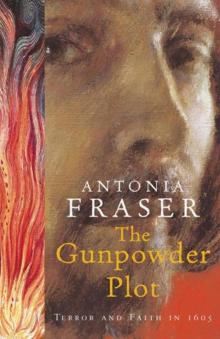 The Gunpowder Plot
The Gunpowder Plot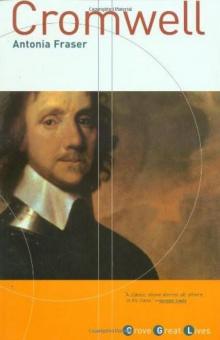 Cromwell
Cromwell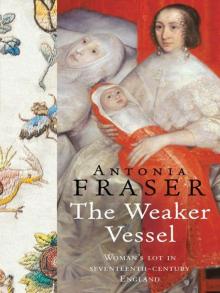 The Weaker Vessel: Women's Lot in Seventeenth-Century England
The Weaker Vessel: Women's Lot in Seventeenth-Century England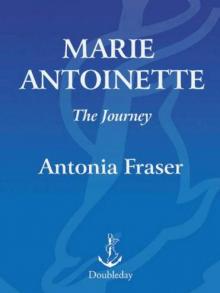 Marie Antoinette: The Journey
Marie Antoinette: The Journey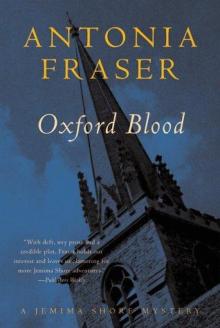 Oxford Blood
Oxford Blood Your Royal Hostage
Your Royal Hostage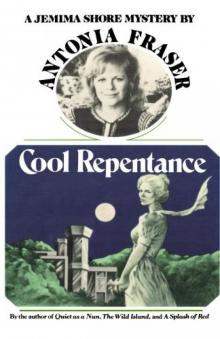 Cool Repentance
Cool Repentance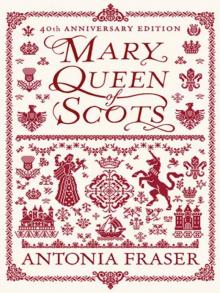 Mary Queen of Scots
Mary Queen of Scots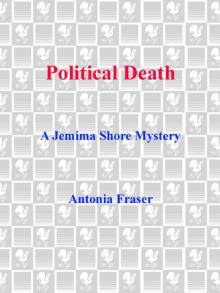 Political Death
Political Death Royal Charles: Charles II and the Restoration
Royal Charles: Charles II and the Restoration My History: A Memoir of Growing Up
My History: A Memoir of Growing Up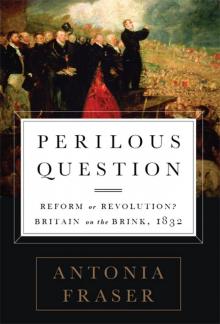 Perilous Question: Reform or Revolution? Britain on the Brink, 1832
Perilous Question: Reform or Revolution? Britain on the Brink, 1832 Jemima Shore at the Sunny Grave
Jemima Shore at the Sunny Grave A Splash of Red
A Splash of Red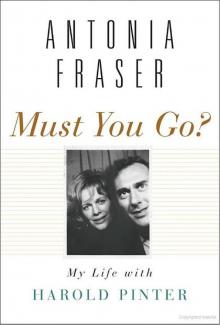 Must You Go?: My Life With Harold Pinter
Must You Go?: My Life With Harold Pinter Love and Louis XIV: The Women in the Life of the Sun King
Love and Louis XIV: The Women in the Life of the Sun King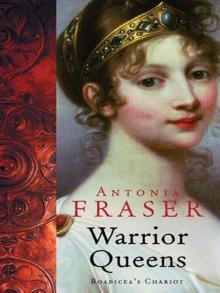 The Warrior Queens
The Warrior Queens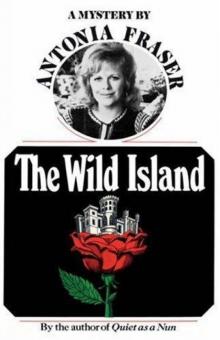 The Wild Island
The Wild Island Quiet as a Nun
Quiet as a Nun Perilous Question
Perilous Question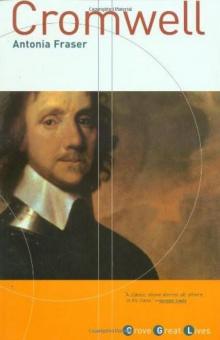 Cromwell, the Lord Protector
Cromwell, the Lord Protector Gunpowder Plots
Gunpowder Plots The Wild Island - Jemima Shore 02
The Wild Island - Jemima Shore 02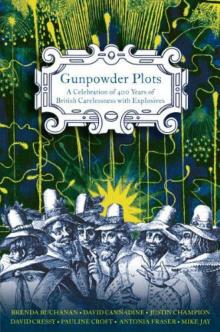 Gunpowder Plots: A Celebration of 400 Years of Bonfire Night
Gunpowder Plots: A Celebration of 400 Years of Bonfire Night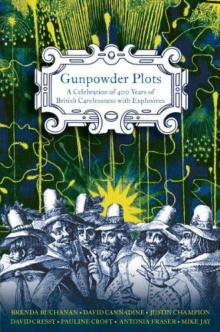 Gunpowder Plots_A Celebration of 400 Years of Bonfire Night
Gunpowder Plots_A Celebration of 400 Years of Bonfire Night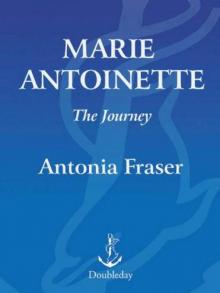 Marie Antoinette
Marie Antoinette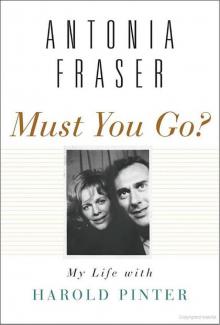 Must You Go?
Must You Go? My History
My History